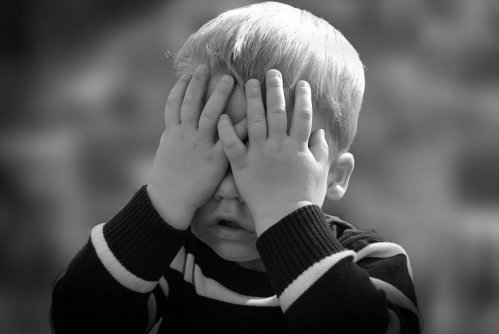Pediatric Chronic Pain: an Overlooked Illness

Pain is an experience as complex as it is personal, which is why great care and communication are needed to respond to a patient’s needs. But, when we see children with chronic pain (pediatric chronic pain), communicating can be difficult because children don’t know the words to express what they feel, except through crying. That’s why, throughout the twentieth century, pediatric chronic pain was overlooked by modern medicine and psychology.
In fact, until the mid-1950’s, doctors believed children were less sensitive to pain than adults. This uncontested belief had grave consequences. In many hospitals, doctors performed surgical procedures on children under the age of two with very little or no anesthesia.
Although they can’t express it, children and babies feel pain the same way adults do.
 Tools used to measure pediatric chronic pain
Tools used to measure pediatric chronic pain
Today, medicine and psychology recognize that pediatric chronic pain has the same characteristics as adult chronic pain. Therefore, they treat it the same. In this sense, pediatric chronic pain lasts 6 or more months, with or without physiological causes.
The problem resides in the fact that there weren’t any protocols or tools to diagnose pediatric chronic pain in the past. This is because, generally, the tools specifically designed for adults were adapted to children. Fortunately, this is changing and clinical psychology is playing an important part in this change.
From projective techniques to recognition techniques and emotional expression, pediatric chronic pain is more recognized, studied, and treated. Pain isn’t considered simple complaining from children. Doctors give it the importance it has and don’t see it as a way to get their parent’s attention.
Drawings, facial expressions, or colors, more than terminology adults use to express pain, most useful and most common ways to help children recognize, express, and control their chronic pain.
Regarding infants or children under the ages of three or four who still don’t have the necessary linguistic or cognitive development to express their pain through words or drawings, the most reliable diagnostic methods are behavioral reports and physiological changes. Older children and teenagers use different techniques to express their pain. Some of the most common ones are:
- Pain thermometer: normally numbered from 0 to 10, where 0 represents ‘No pain’ and 10 represents ‘The most intense pain imaginable’. The child indicates the intensity of pain by coloring the corresponding area of the thermometer.
- Eland Color Tool (ECT): a scale of colors where children choose one of eight colors that correspond to different intensities of pain, from ‘No pain’ to the ‘Worse pain imaginable’.
- Faces Pain Scale: used with children over 5 years old. It consists of nine faces. Four of them represent a diverse magnitude of positive expressions, another four represent negative expressions, and the last one represents a neutral expression. The child chooses the face which most resembles the feeling of pain at that moment.
- The Pediatric Pain Questionnaire: used with older children or teenagers. It consists of 8 questions related directly to the pain.
- Pain Journal: Self-report with a journal format, which includes a pain scale from 0, meaning ‘No pain’, to 5, ‘Very severe pain’ to indicate the level of pain at the moment. Doctors evaluate pain two times a day throughout the post-surgery period.
 Psychological treatment for pediatric chronic pain
Psychological treatment for pediatric chronic pain
When discussing treatments for pediatric chronic pain we come across an alarming reality. Most medications used to treat pain don’t have indications for pediatric use. Hence, that’s why there’s a special emphasis on multidisciplinary treatments for children.
Clinical psychology, in this case, contributes a series of treatments considered to be effective and efficient for children 7 years or older. These treatments have also had very promising findings in the treatment of chronic pain in younger children as well. The treatment, in general, depends on the type of pain and its analysis. Some of the most used techniques are:
- Biofeedback training: used mostly on various types of headaches. It consists of controlling physiological indicators of tension and also temperature within measured parameters.
- Relaxation techniques: deep breathing or muscle relaxation. It’s very effective in children because they decrease activity pain causes.
- Mindfulness: the scarce studies show statistically significant improvements in variables like intensity and frequency of the pain episodes.
- Hypnosis: the psycho-therapeutic objective tends to be directed at controlling the physiological responses, the attention management, and cognitive aspects linked to the perception of pain.
- Visualization: uses mental images or internal representations to regulate the experience of pain and thereby produce an analgesic effect.
- Distraction: it’s been demonstrated that focusing attention on a painful stimulant increases the sensation of pain and vice-versa.
- Contingency control: through a functional analysis of the subject, the intention is to reorganize the environment to facilitate the adjusted behavior and proportionate to the moments of pain, avoiding to reinforce or to reward unsettled behavior.
Despite all of these advances, and although there have been signs of effectiveness and efficiency, there’s not a lot of access to psychological treatment for pediatric chronic pain. That’s why the multidisciplinary advancement and more studies in this area are the keys to advancing the fight against pediatric chronic pain.
Pain is an experience as complex as it is personal, which is why great care and communication are needed to respond to a patient’s needs. But, when we see children with chronic pain (pediatric chronic pain), communicating can be difficult because children don’t know the words to express what they feel, except through crying. That’s why, throughout the twentieth century, pediatric chronic pain was overlooked by modern medicine and psychology.
In fact, until the mid-1950’s, doctors believed children were less sensitive to pain than adults. This uncontested belief had grave consequences. In many hospitals, doctors performed surgical procedures on children under the age of two with very little or no anesthesia.
Although they can’t express it, children and babies feel pain the same way adults do.
 Tools used to measure pediatric chronic pain
Tools used to measure pediatric chronic pain
Today, medicine and psychology recognize that pediatric chronic pain has the same characteristics as adult chronic pain. Therefore, they treat it the same. In this sense, pediatric chronic pain lasts 6 or more months, with or without physiological causes.
The problem resides in the fact that there weren’t any protocols or tools to diagnose pediatric chronic pain in the past. This is because, generally, the tools specifically designed for adults were adapted to children. Fortunately, this is changing and clinical psychology is playing an important part in this change.
From projective techniques to recognition techniques and emotional expression, pediatric chronic pain is more recognized, studied, and treated. Pain isn’t considered simple complaining from children. Doctors give it the importance it has and don’t see it as a way to get their parent’s attention.
Drawings, facial expressions, or colors, more than terminology adults use to express pain, most useful and most common ways to help children recognize, express, and control their chronic pain.
Regarding infants or children under the ages of three or four who still don’t have the necessary linguistic or cognitive development to express their pain through words or drawings, the most reliable diagnostic methods are behavioral reports and physiological changes. Older children and teenagers use different techniques to express their pain. Some of the most common ones are:
- Pain thermometer: normally numbered from 0 to 10, where 0 represents ‘No pain’ and 10 represents ‘The most intense pain imaginable’. The child indicates the intensity of pain by coloring the corresponding area of the thermometer.
- Eland Color Tool (ECT): a scale of colors where children choose one of eight colors that correspond to different intensities of pain, from ‘No pain’ to the ‘Worse pain imaginable’.
- Faces Pain Scale: used with children over 5 years old. It consists of nine faces. Four of them represent a diverse magnitude of positive expressions, another four represent negative expressions, and the last one represents a neutral expression. The child chooses the face which most resembles the feeling of pain at that moment.
- The Pediatric Pain Questionnaire: used with older children or teenagers. It consists of 8 questions related directly to the pain.
- Pain Journal: Self-report with a journal format, which includes a pain scale from 0, meaning ‘No pain’, to 5, ‘Very severe pain’ to indicate the level of pain at the moment. Doctors evaluate pain two times a day throughout the post-surgery period.
 Psychological treatment for pediatric chronic pain
Psychological treatment for pediatric chronic pain
When discussing treatments for pediatric chronic pain we come across an alarming reality. Most medications used to treat pain don’t have indications for pediatric use. Hence, that’s why there’s a special emphasis on multidisciplinary treatments for children.
Clinical psychology, in this case, contributes a series of treatments considered to be effective and efficient for children 7 years or older. These treatments have also had very promising findings in the treatment of chronic pain in younger children as well. The treatment, in general, depends on the type of pain and its analysis. Some of the most used techniques are:
- Biofeedback training: used mostly on various types of headaches. It consists of controlling physiological indicators of tension and also temperature within measured parameters.
- Relaxation techniques: deep breathing or muscle relaxation. It’s very effective in children because they decrease activity pain causes.
- Mindfulness: the scarce studies show statistically significant improvements in variables like intensity and frequency of the pain episodes.
- Hypnosis: the psycho-therapeutic objective tends to be directed at controlling the physiological responses, the attention management, and cognitive aspects linked to the perception of pain.
- Visualization: uses mental images or internal representations to regulate the experience of pain and thereby produce an analgesic effect.
- Distraction: it’s been demonstrated that focusing attention on a painful stimulant increases the sensation of pain and vice-versa.
- Contingency control: through a functional analysis of the subject, the intention is to reorganize the environment to facilitate the adjusted behavior and proportionate to the moments of pain, avoiding to reinforce or to reward unsettled behavior.
Despite all of these advances, and although there have been signs of effectiveness and efficiency, there’s not a lot of access to psychological treatment for pediatric chronic pain. That’s why the multidisciplinary advancement and more studies in this area are the keys to advancing the fight against pediatric chronic pain.
This text is provided for informational purposes only and does not replace consultation with a professional. If in doubt, consult your specialist.







